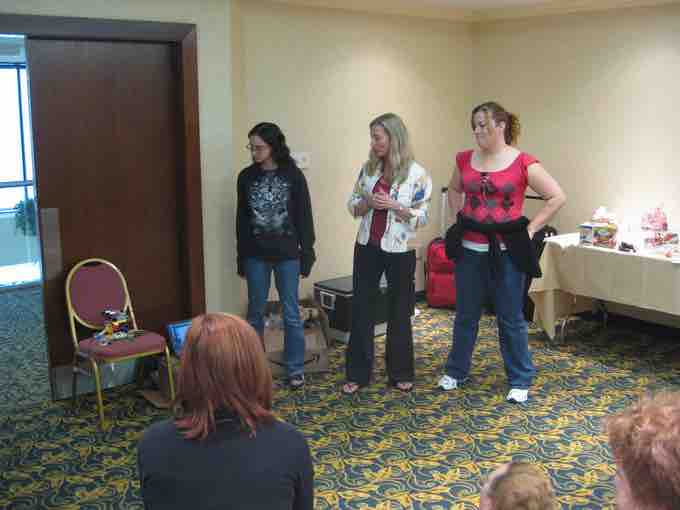Preparing for Team Presentations
The way a team prepares for a presentation can be broken down into formal processes and interactions. This is not a strict distinction, but two different ways of analyzing how a team achieves its goals while building, practicing, and delivering a presentation.
Processes
Researchers have identified ten teamwork processes divided into three categories, which can be used to describe the dynamics of group thinking and team presentations.
Transition processes are reflective in nature, and take place between periods of action. They serve to assess previous actions and outline future actions. In team and group presentations, these processes can serve to:
- Determine what the team is trying to achieve, and what steps will lead there.
- Specify the incremental goals and accomplishments that will lead to overall mission success.
- Formulate an approach to achieving the goals and mission.
Action processes embody the steps that the group takes to move forward. Whether during preparation or delivery of a presentation, these actions are crucial to working effectively in a team. Team members within groups must:
- Monitor progress toward goals and make sure the team is on track, rather than veering off course.
- Assure that roles and responsibilities are being fulfilled.
- Monitor and backup behavior to ensure that all members remain engaged.
- Coordinate roles to keep things organized and working smoothly.
Interpersonal processes apply during the delivery of group presentations, while team member both present and transition between roles (e.g., speaker and observer). They include:
- Identifying and resolving disputes.
- Motivating and building confidence, while maintaining high member performance.
- Making sure group member participation steers rather than stalls the development and delivery of the presentation.
Interactions
Another approach to the dynamics of a team presentation involves looking specifically at the strategies that guide interactions between group members throughout the team effort . Examples of strategies for interaction include:

Group Presentation
Timing transitions between slides and other breaks is crucial to a well-prepared group presentation.
- Establishing ground rules: Establishing ground rules sets expectations for each group member on how the group plans to achieve its end goal (e.g, educate students, sell a product to prospects, etc). Making these rules explicit helps avoid miscommunication at the beginning of the project.
- Mission analysis:This strategy ensures every team member has contact information for the others, and that everyone's schedule is coordinated for meeting times. At a higher level, it means achieving consensus on how group decisions will be made and how group information will be shared with all team members.
- Managing team cooperation: This strategy applies to group meetings. It focuses on outlining an intention for each meeting, and reviewing meeting activities and actions to ensure the intention has been met.
- Resolving conflict: Resolving conflict requires the group to acknowledge that there is a legitimate conflict. The group must then agree on an approach to address it, and determine how to proceed. Possible solutions include discussing a compromise, referring to previously established group decisions, or deciding to address the issue later.
- Preparing Back-ups: Practicing transitions between group members' sections, preparing extra copies of handouts and other visual aids, and reviewing group members' roles are all part of this strategy. This helps improve preparation and the delegation of tasks within the group.